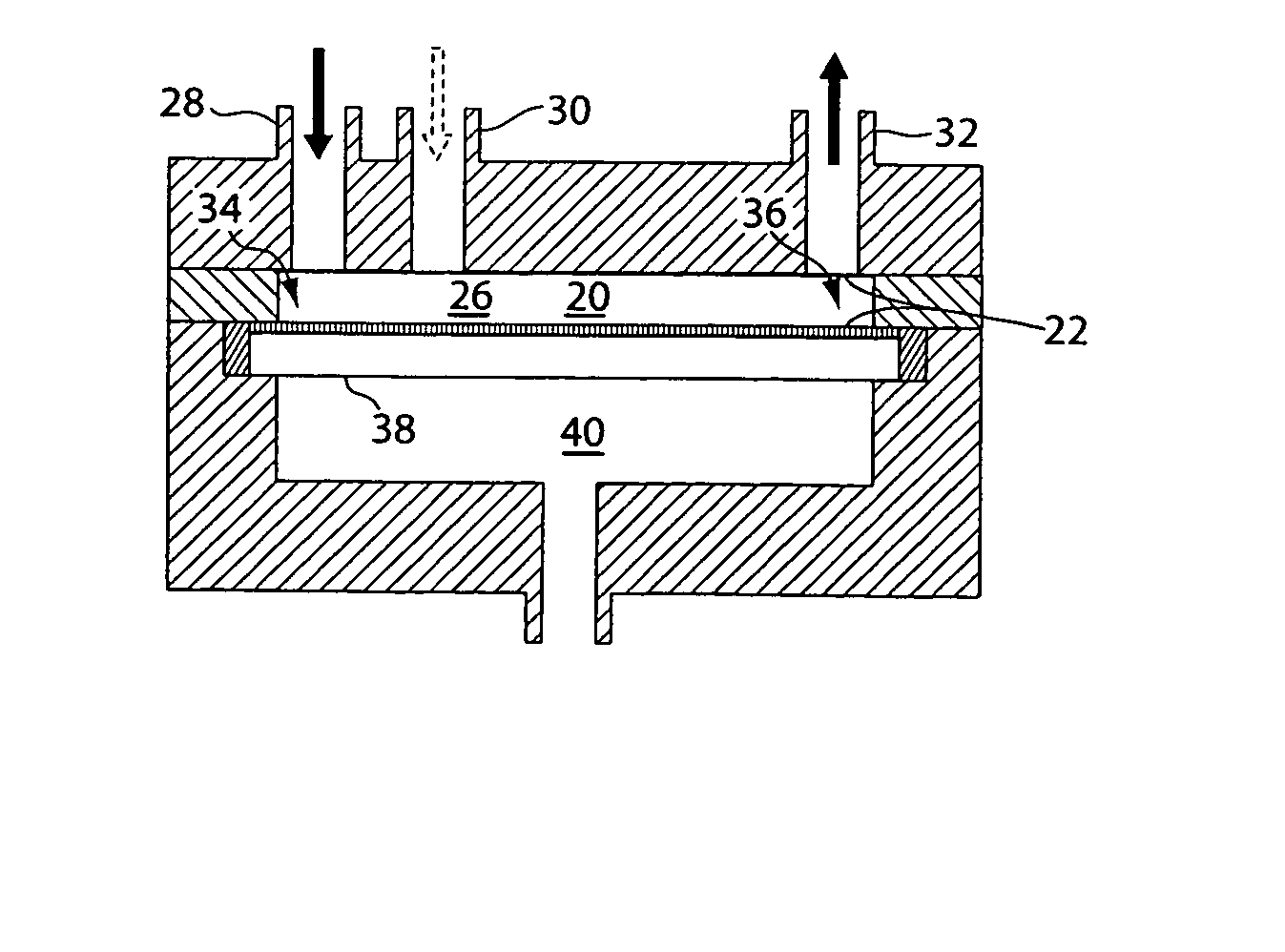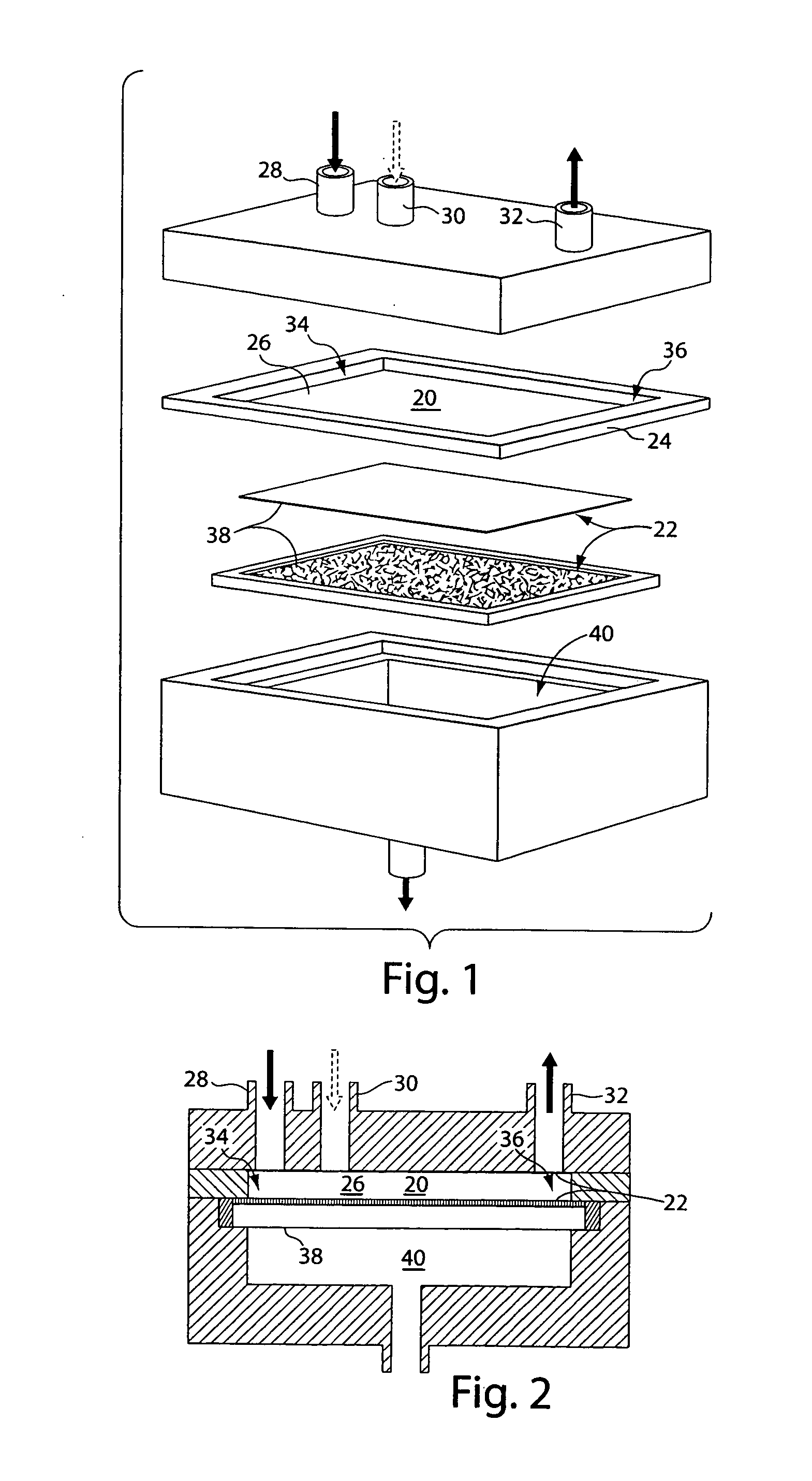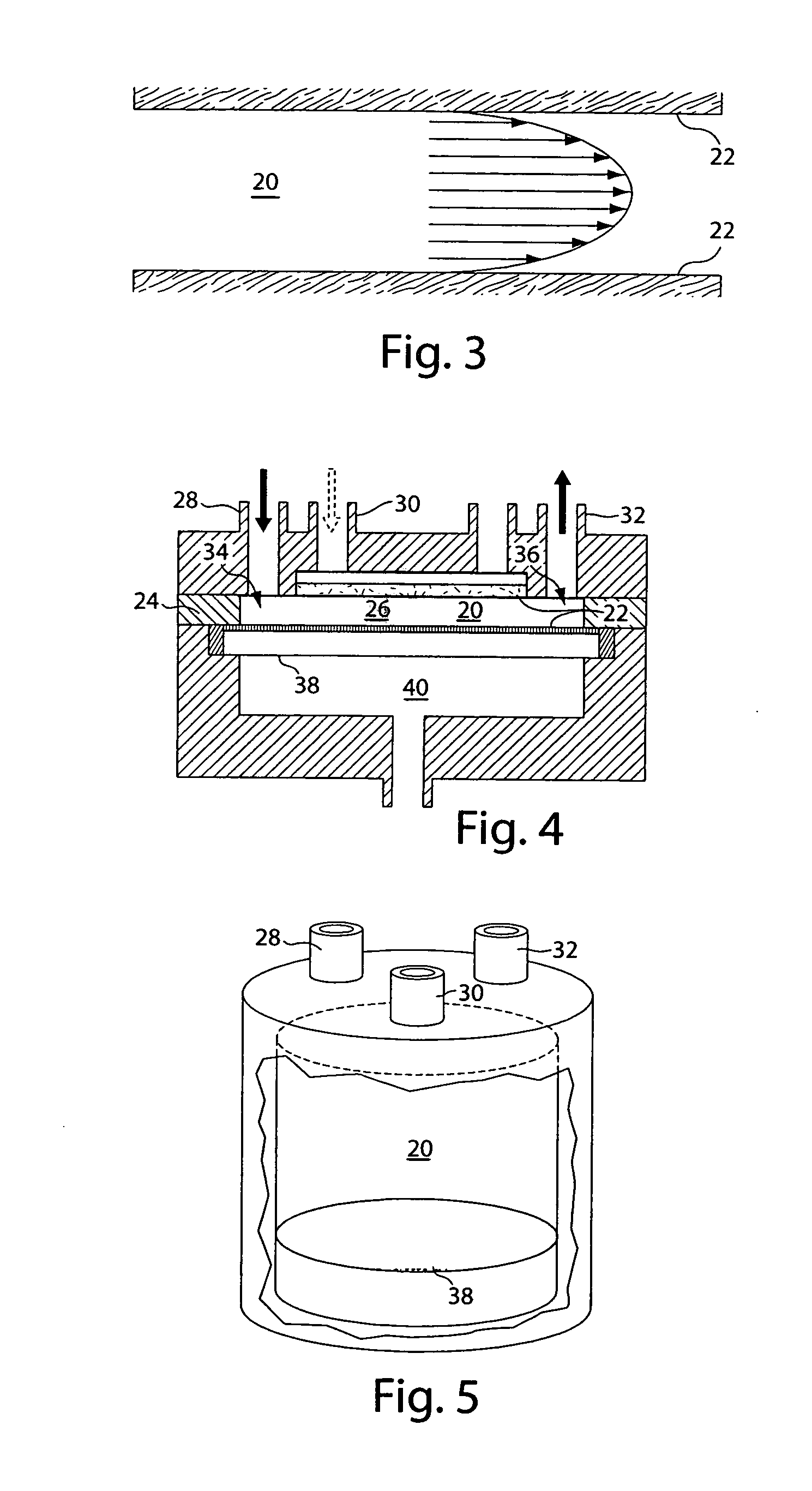Systems and methods for sample modification using fluidic chambers
a fluid chamber and sample technology, applied in the field of sample modification and analysis, can solve the problems of limiting the application of electrophoretic analysis, requiring even more steps, and time-consuming and laborious process of dna isolation and purification, and achieve the effect of improving the overall efficiency of sample processing
- Summary
- Abstract
- Description
- Claims
- Application Information
AI Technical Summary
Benefits of technology
Problems solved by technology
Method used
Image
Examples
example 1
Comparison of a Single Chamber for DNA Isolation with a Typical Laboratory Protocol
[0197] The following are steps from a laboratory protocol developed to isolate high molecular weight genomic DNA from E. coli in solution. The method is designed to gently break open E. coli cells and to digest proteins with enzymes, while lipids are removed with mild / enzymes and detergents followed by dialysis.
[0198] Protocol: [0199] 1. Measure transmittance of overnight E. coli culture at 600 nm, dilute to between 70% and 15% transmittance. [0200] 2. Spin down the cells, decant media, and resuspend pellet in TE buffer and spin cells down again. [0201] 3. Decant buffer, resuspend cell pellet in the residual TE, and then add 4 mL of “bacterial lysis solution” with lysozyme to bacterial slurry. [0202] 4. Immediately mix gently, by swirling mixture and place at 37° C. for 2 hours, gently swirling the lysis periodically. [0203] 5. Add 20 μL of a 20 mg / mL solution of Proteinase K to cell lysis, mix gent...
example 2
DNA Digestion, DNA Tagging and DNA Fractionation
[0221] As noted previously, while the DNA isolation step is the only one shown in detail for brevity, the same performance advantages provided by a modular chamber are expected for DNA digestion and DNA labeling. By altering the operating parameters for a chamber, such as buffer type, operating temperature and time, and membrane type, one can use the modular chamber for digestion, labeling or other biochemical protocols. The modular chamber and its basic design principal, a temperature-controlled compartment divided by a semi-permeable membrane, remain the same. The addition and removal of fluid, sample and waste also remain as illustrated in FIG. 12.
[0222] For example, DNA digestion would require a unique buffer system for the reaction to occur. The restriction enzyme required for the digestion is injected into the large compartment containing the DNA and the entire system is incubated at ˜40° C. The actual incubation time can be le...
example 3
Comparison of the Proposed System to a Reported Field Investigation of Bacillus anthracis Via Air Sampling
[0224] A field investigation of Bacillus anthracis was performed on a variety of samples, including surface swabs and air samples (Higgins, J. A., et al., Applied and Environmental Microbiology, 2003. 69(1): p. 593-599). To prepare the air sample for real time polymerase chain reaction (PCR) analysis, the air sample was centrifuged and the resulting pellet was resuspended and subjected to a unique rapid DNA extraction kit. Since the sample was centrifuged to form a pellet, any contaminants that were also collected would be present during DNA extraction. This can reduce DNA extraction efficiency. As well, contamination could adversely affect the final detection method.
[0225] In comparison, the system and method of the invention would allow one to extract high molecular weight DNA from the pathogen, and thus detection is not restricted to PCR methods. Performance time would be e...
PUM
| Property | Measurement | Unit |
|---|---|---|
| size | aaaaa | aaaaa |
| diameter | aaaaa | aaaaa |
| diameter | aaaaa | aaaaa |
Abstract
Description
Claims
Application Information
 Login to View More
Login to View More - R&D
- Intellectual Property
- Life Sciences
- Materials
- Tech Scout
- Unparalleled Data Quality
- Higher Quality Content
- 60% Fewer Hallucinations
Browse by: Latest US Patents, China's latest patents, Technical Efficacy Thesaurus, Application Domain, Technology Topic, Popular Technical Reports.
© 2025 PatSnap. All rights reserved.Legal|Privacy policy|Modern Slavery Act Transparency Statement|Sitemap|About US| Contact US: help@patsnap.com



